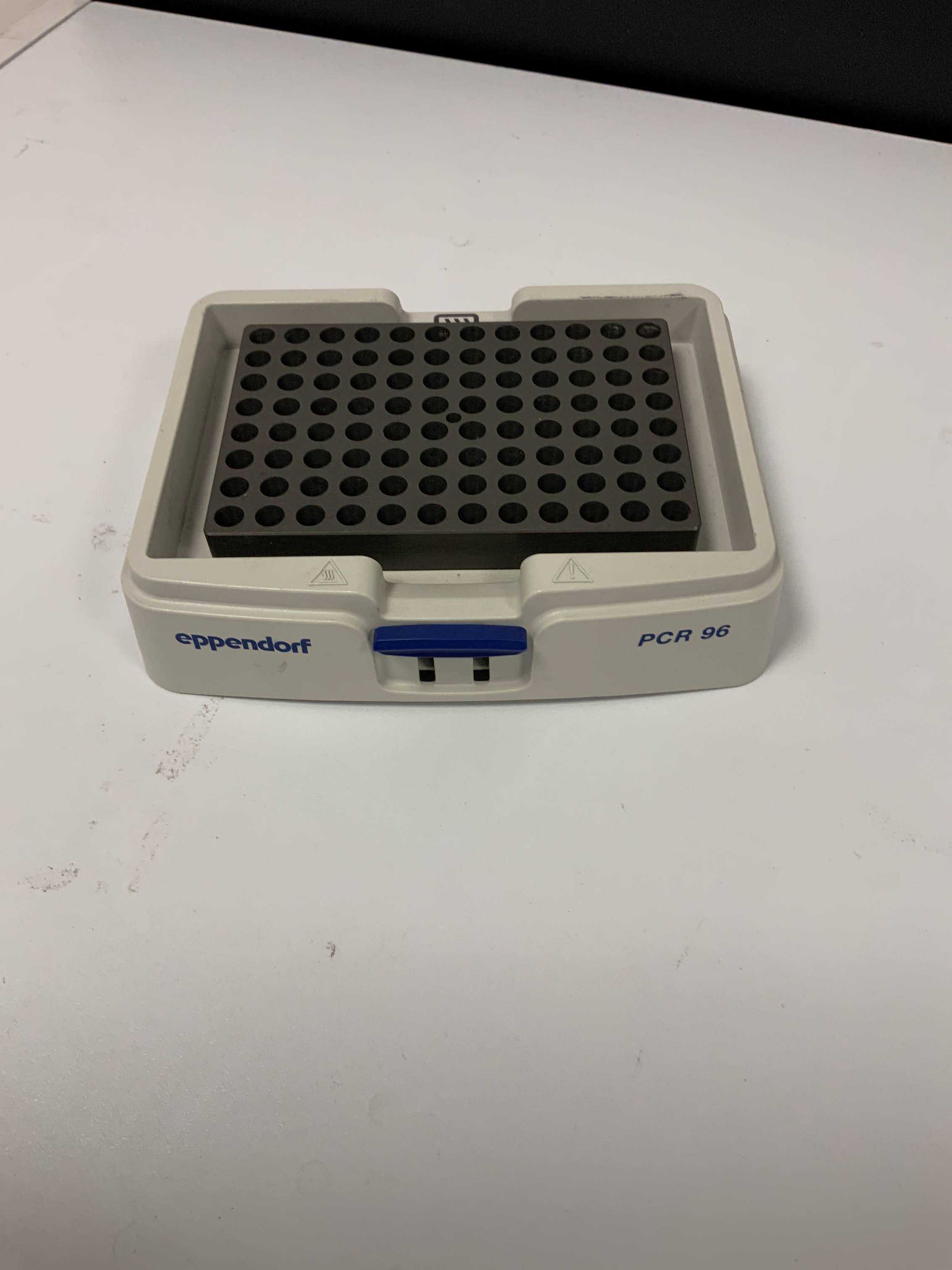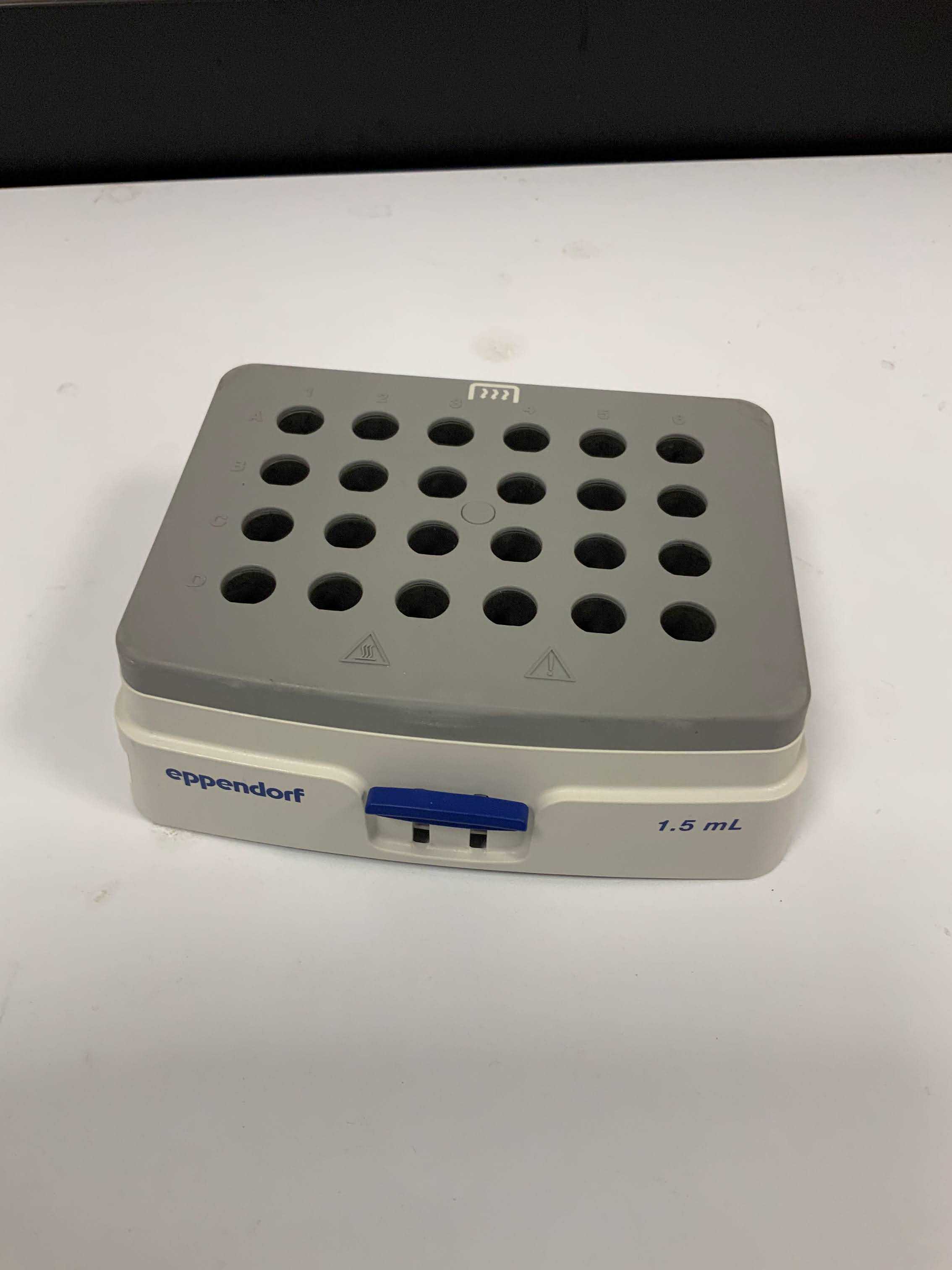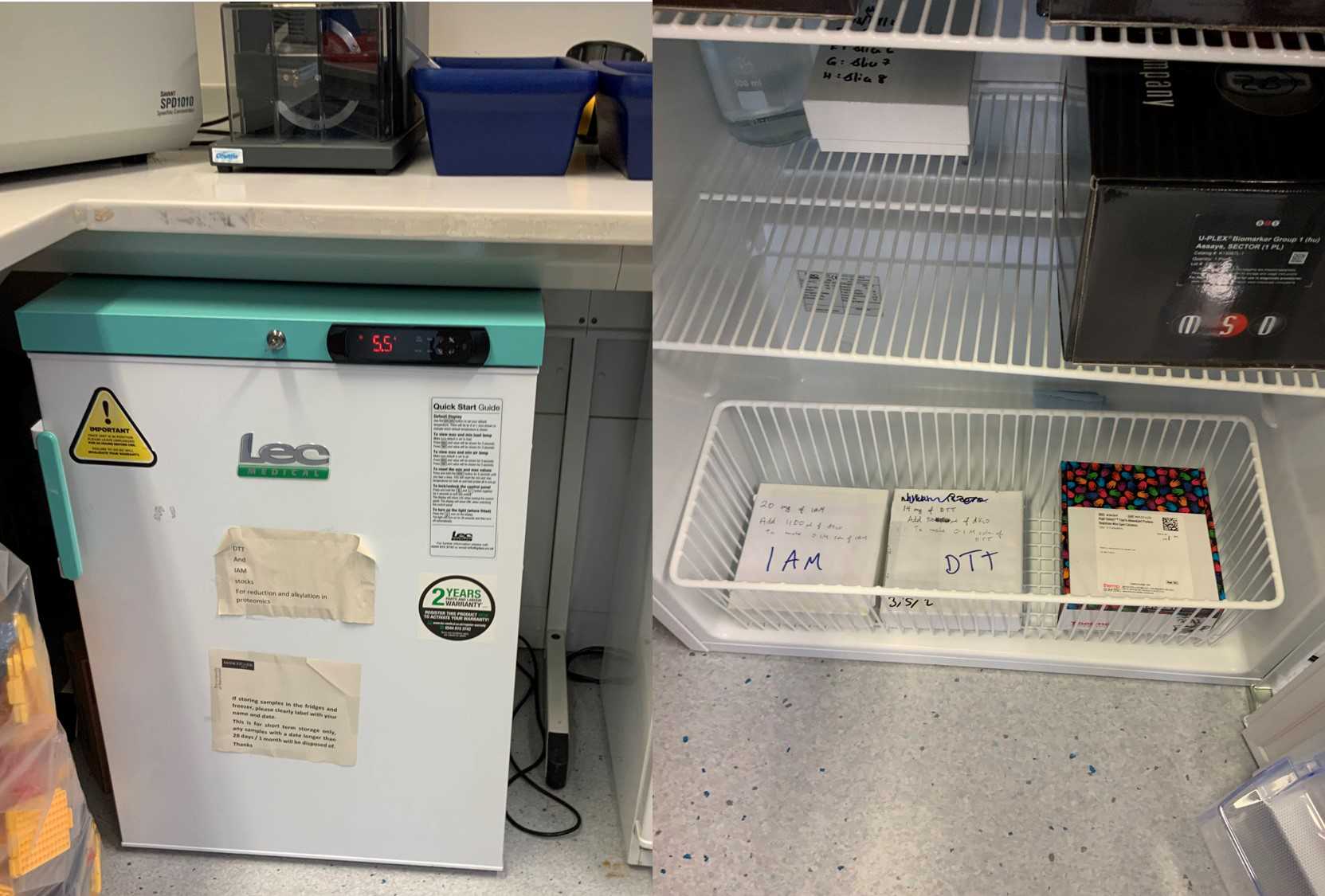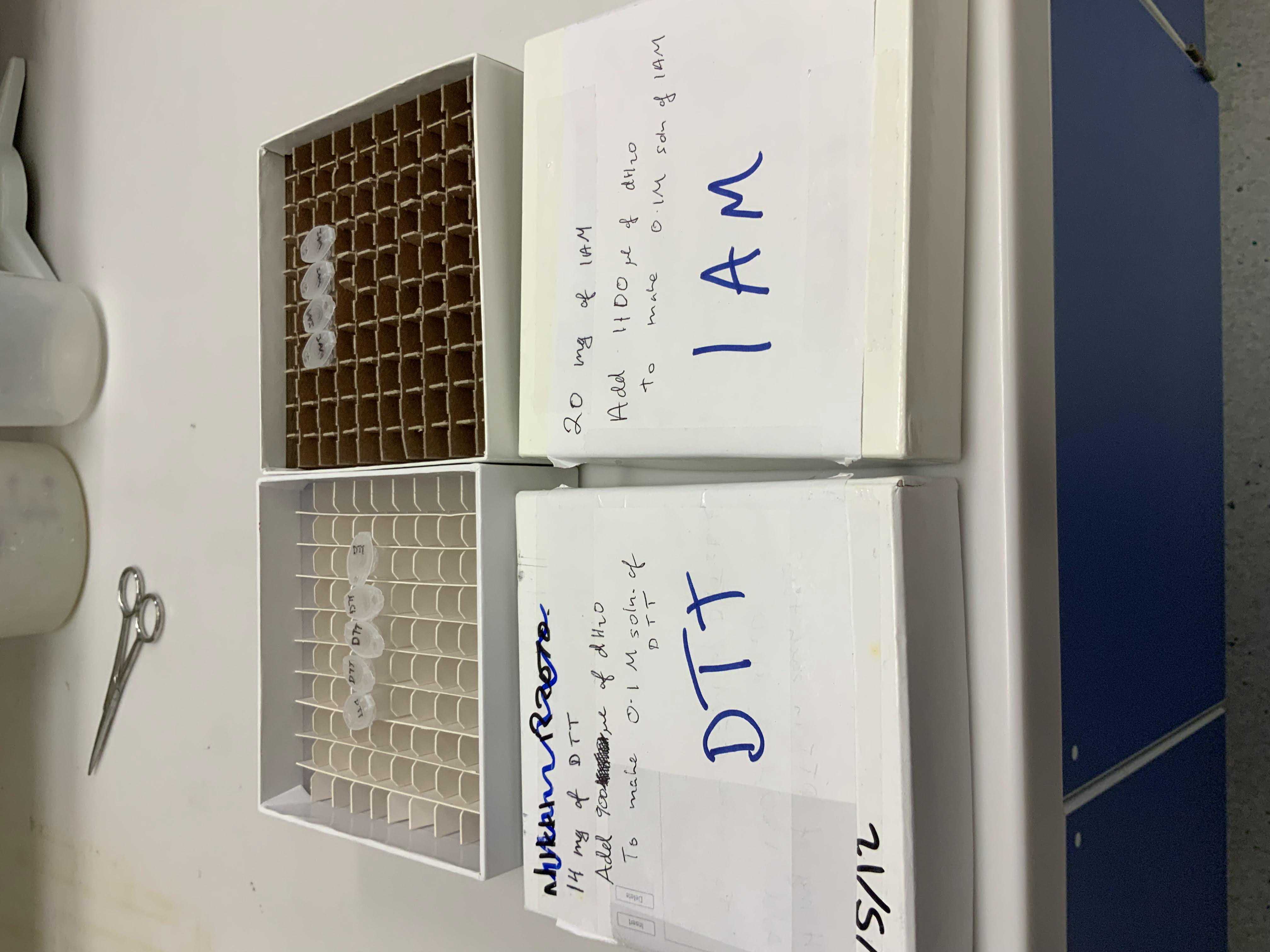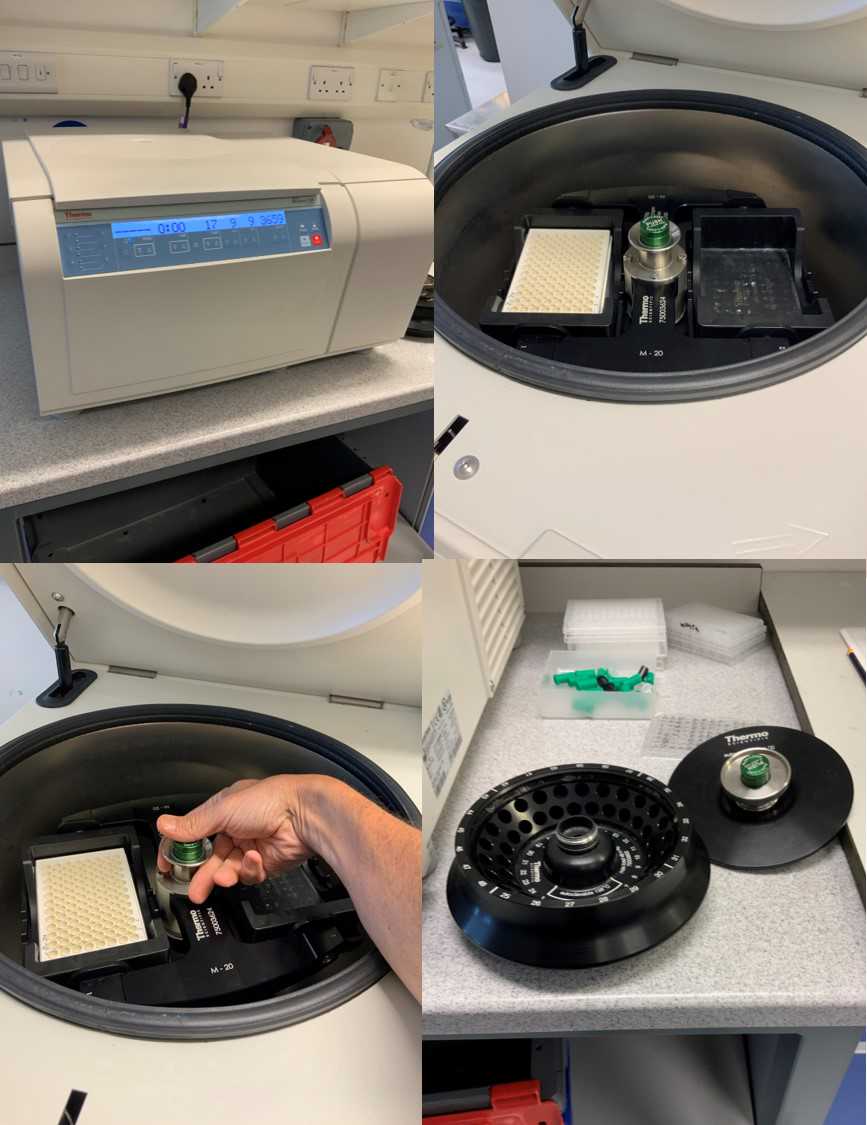Reduction and alkylation of protein lysates for LC-MS (proteomics) using dithiothreitol (DTT) and iodoacetamide (IAM)
ronan o'cualain
Reduction
Alkylation
Iodoacetamide
Dithiothreitol
in-solution digestion
peptide desalting proteomics
mass spectrometry
LC-MS
proteomics
Cysteine
Cystine
Disulfides
Sulfhydryl Compounds
Abstract
This protocol details the procedure of the reduction and alkylation using dithiothreitol (DTT) and iodoacetamide (IAM).
Before start
Initial preparation:
Before you begin:
Locate the Eppendorf Thermomixer, and attach the appropriate heating block depending on whether your samples are in 0.5mL or 1.5mL tubes. Set the temperature to 60°C and a speed of 500rpm,0h 0m 0s.
Attachments
Steps
Before you begin
Locate the Eppendorf Thermomixer, along with the thermoblock you will be using. The Thermoblock "clicks" into place onto the Thermomixer unit. Set the Thermomixer to 60°C and a speed of 500rpm,0h 0m 0s.
0.75mL Eppendorf tubes
Use the 1.5 mL thermoblock for 1.5mL Eppendorf tubes.
Take one of each for your preparation. Place the boxes back in the fridge.
To make a 100millimolar (mM) solution of DTT and IAM, add the volume of water indicated on the box from which you took the pre-weighed aliquot.
Reduction and alkylation:
You will need to know the volume of the protein lysate sample that you wish to alkylate. If proceeding from LE220+ sample processing, this will be approximately 130 uL for the smaller tubes, and 500 uL for the larger tubes.
Reduce your protein sample.
If the starting concentration (Sc) of the stock DTT is 100millimolar (mM), and the volume of sample (Fv) to be reduced is 130µL, then use the following calculation to work out how much of the stock DTT (Sv) to add = (Fc * Fv) / Sc.
For 130µL of lysate, add (5 * 130) / 100, or 6.5µL of stock 100millimolar (mM) DTT.
For the 500µL lysate, add 25µL of the stock 100millimolar (mM) DTT.
Place the tubes on the Eppendorf thermomixer and heat for 0h 10m 0s at 60°C.
Alkylate your protein sample. Remove the protein samples from the thermomixer, and allow to cool to Room temperature. Add IAM. It is important to add at least three times the amount of IAM to DTT. So alkylate with 15millimolar (mM) of IAM.
For 130µL of protein sample, add (15 * 130) / 100 or 20µL of IAM to the samples, and for 500µLof sample, add (15 * 500) / 100 or 75µL of IAM to the samples.
Vortex mix the tubes briefly and place the protein sample tubes in the dark (a drawer) for 0h 30m 0s.
After 0h 30m 0s, add DTT to quench the alkylation reaction. Add the same amount of DTT again as to what you added in the reduction step. Vortex mix briefly.
Centrifuge your samples at 14000rcf,0h 0m 0s for 0h 10m 0s using the centrifuge in room B2075.
To use, switch is located at rear of machine. To swop rotors, press down on the green spindle, and lift the rotor upwards. The centrifuge is for using a plate rotors, and a tube rotor. The rotors are located to the right of the machine, along with balances.
Tubes and plates must be balanced!
Remove the supernatant using a clean pipette tip to a labelled tube. This is the protein lysate.
You have now reduced and alkylated your protein lysate samples.

